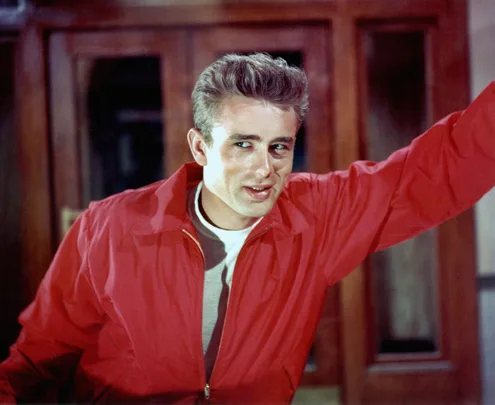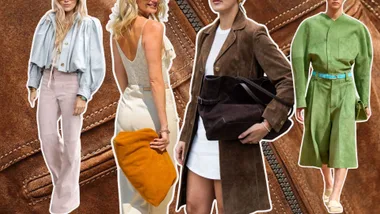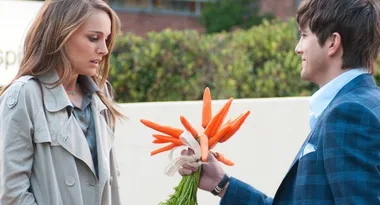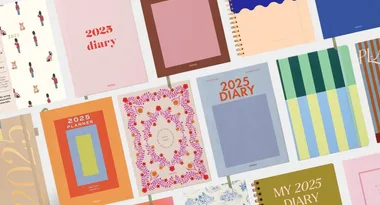When we think about 1950s fashion, we think of James Dean’s leather jacket in Rebel Without A Cause or John Travolta in Grease, or letterman jackets and preppy teenagers. The 1950s was a time of great change, as the world was emerging out of the chaos and destruction of WW2.
The fifties saw the birth of rock ‘n’ roll music, abstract expressionism, and the emergence of a rebellious youth counterculture that was in many ways a reaction to post-war conformity. This new devil-may-care attitude was reflected in the style choices of the youth, particularly in men’s fashion.
RELATED: ‘Harvey’ remake in the works at Netflix
1950s Men’s Fashion
Ivy League Preppy
The fifties saw the rise of the teenager, and Ivy League students began wearing cardigan sweaters and letterman jackets, giving them a casual, sporty look. This helped them stand out among the conservative tailored jackets and neckties of the academe. Many teens also began to favour All-Star basketball shoes over leather loafers.

Rebel Cool
Aside from the Fonz’s leather jacket from Happy Days, the fifties brought us the turtleneck, the denim jacket, and the white T-shirt. James Dean wore the white T-shirt proudly in Rebel Without A Cause, and Marlon Brando caused a spike in leather biker jacket sales after wearing one in The Wild One. Rebellious fashion became cool in the 50s, and it represented a rejection of corporate conformity in favour of casual self-expression.
The Beat Poets, such as Jack Kerouac and Neal Cassidy wore plaid shirts and dirty jeans, appropriating working-class fashion as they abandoned the conservative dress code of their elders. The artist Jackson Pollock, known for his abstract paintings, often wore denim overalls – a stark contrast to his suit-wearing predecessors from the 30s and 40s.
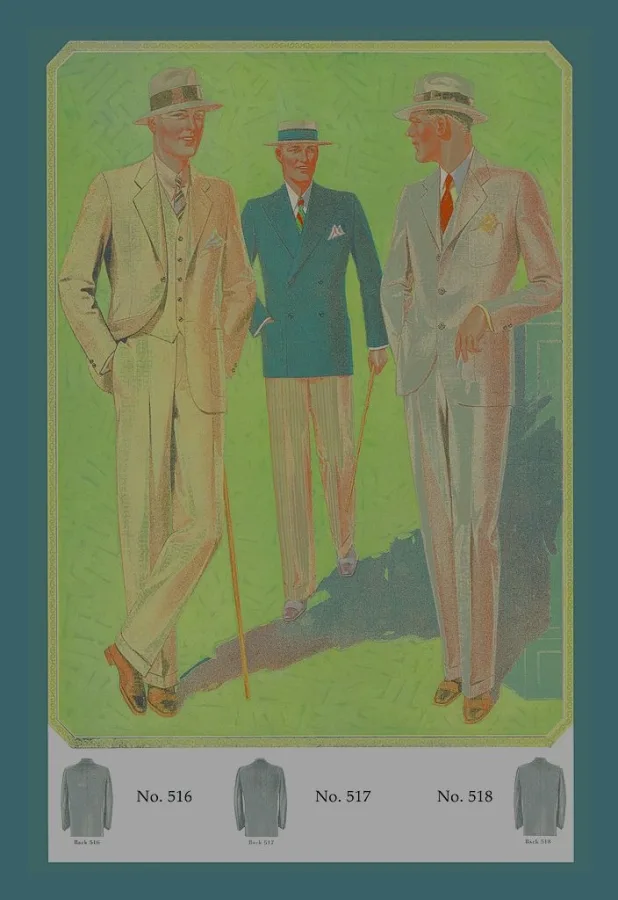
The Sack Suit
Still, the sharp-looking suit was not completely abandoned by men during the 50s. Frank Sinatra, Dean Martin, and the other members of the Rat Pack wore their suits proudly during their performances. Suits were larger and fuller during this time, however. The prevailing suit cut at the time was known as a sack suit, with natural shoulders, soft-front construction, and straight-cut trousers. They emphasised comfort and accommodated all body types.
However, there weren’t many colour choices for suits at the time, with only three real choices – dark blue, dark brown, and charcoal. The workplace was still a bastion for conservative clothing during the 50s, predating the sweeping changes of the 60s as portrayed in the show Mad Men. But the age of tuxedos at parties and formal wear at the workplace were soon coming to an end.
Pleated Trousers And Penny Loafers
Although popular during the 50s, straight-cut trousers were a little too straight and narrow for some people, and soon pleated trousers made their appearance. They created a fuller silhouette than straight-cut trousers and were more comfortable and breezy.
Whatever trousers 50s men decided to wear, they would often pair them with penny loafers, otherwise known as moccasins. They were the footwear of choice for the preppy Ivy Leaguers, who saw Norwegian fishermen sporting the loafers and appropriated them for North American fashion.
The Knitted Polo
Although Rene Lacoste designed the first polo shirt in the 1920s, the knitted polo shirt made its debut in the 1950s as an alternative to shirts. These resemble modern polo shirts except they had wider collars and were often a different colour from the shirt body.
Some of these knit polos had a single polo at the neck, which others bore two buttons in front like modern polos. Some polos even had laces, like shoes!
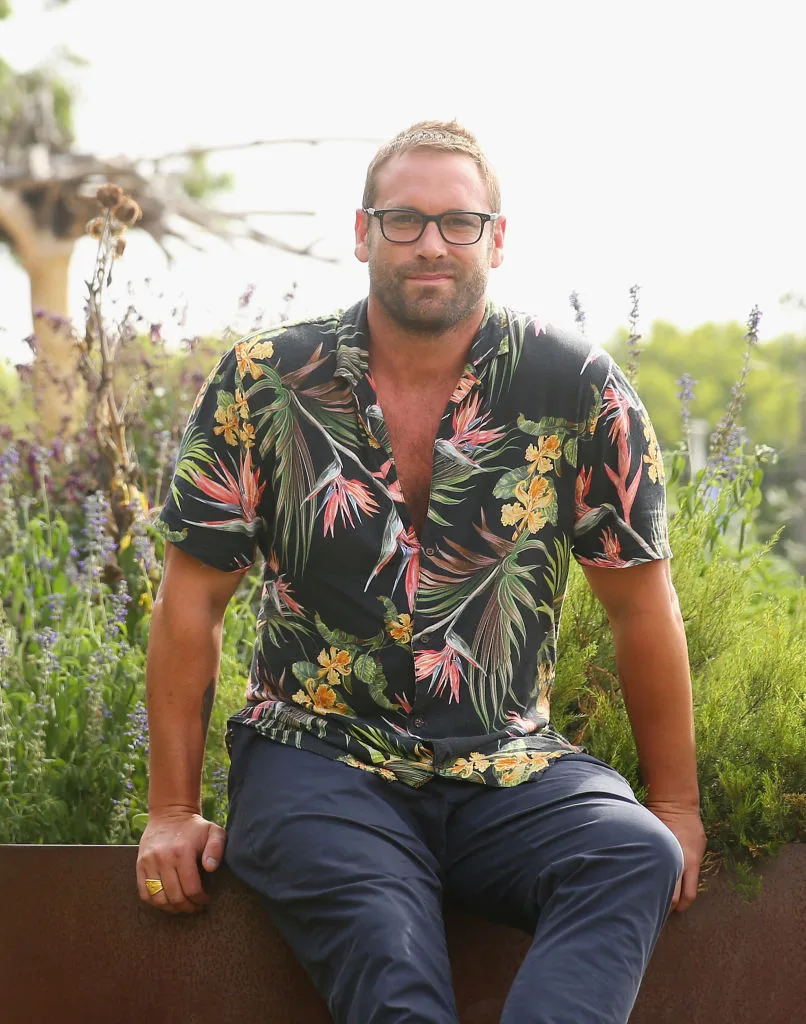
The Hawaiian Shirt And Cuban Collar Shirt
The Hawaiian or “Aloha” shirt made its debut in the 1950s as well. These summer fashion pieces were otherwise classic button-down shirts that bore colourful tropical prints and patterns, adding a bit of pizzazz to an otherwise conservative design. Going to the beach and surfing were popular pastimes of the fifties, and bathing suits for men often consisted of Hawaiian shirts and high-waisted shorts.
The Cuban collar shirt was like a sharper, more formal version of the Hawaiian shirt, with a camp collar, short sleeves, and straight hem. They tended to be striped or checkered, although Hawaiian-style prints were also common in 50s fashion for men. Both types have become common bowling shirts to this day.
The Harrington Jacket
Most famously worn by James Dean, the Blouson or Harrington jacket was first spotted in the UK in the 1930s, worn by British pilots. But they soon became a staple of US 1950s fashion for men, as people were keen on copying the flight and bomber jackets of WWII and Korean War pilots.
Elvis Presley and Steve McQueen also wore the zippered waist-length jacket often, and James Dean wore his with the collar turned up and zipped up just to the waist, showing off the white T-shirt underneath. Even Frank Sinatra wore one in his movie Assault on a Queen in 1966.
Don’t Forget Your Hat
Any overview of 1950s men’s fashion wouldn’t be complete without mentioning hats. From broad-brimmed Stetson hats to classic fedoras to casual straw hats, fifties men never forgot to accessorise. Hats were a sign of respect and etiquette as well, and every well-dressed gentleman was ready to tip their hats to the ladies.
Fedora hats often came in grey, navy blue, or khaki, making them easy to match with the predominant colours of fifties men’s fashion. Straw hats had a bit more personality, with plaid, striped, and even more colourful prints lending more of a casual air to the wearer.
A Decade Of Changes
The 1950s saw men’s fashion slowly coming out of the conformist shadow of 1930s and 1940s men’s wear, allowing rebels to express themselves much more freely through their attire.
RELATED: Hollywood legend Tab Hunter dies at 86
